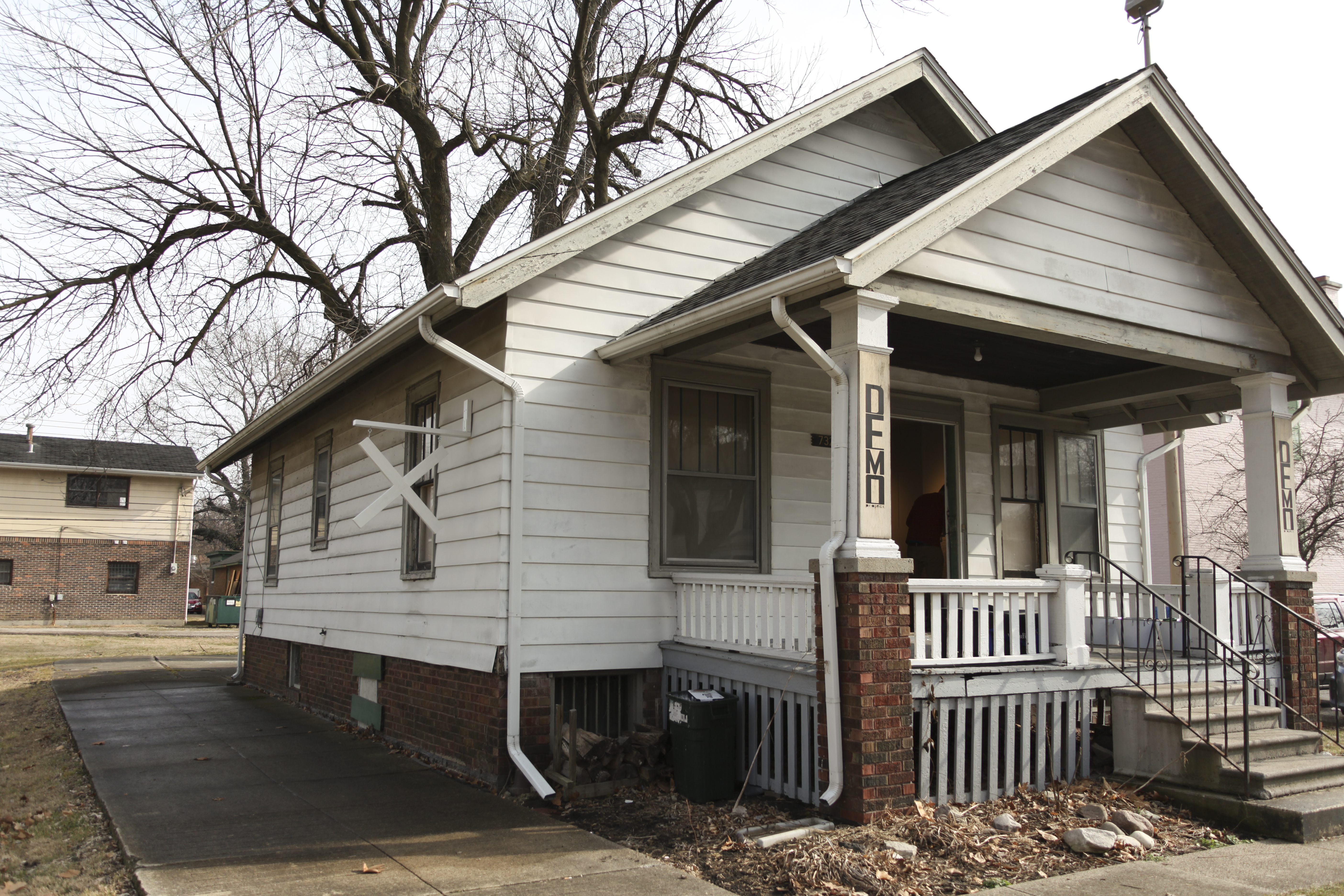On a calm residential street in Springfield, Illinois, stands a modest, white bungalow. Visible from the sidewalk, two wooden boards, nailed to each of the home’s two front porch pillars with “D-E-M-O” in vertical black print, hint at what’s inside. DEMO Project, a home converted into a gallery, is scheduled for demolition in 2018. The gallery showcases contemporary artists in a novel setting that exists at the intersection of an intimate domestic space and a white-wall gallery. Early this February, I traveled to Springfield for DEMO’s exhibitions of Emily Ward Bivens and Frances Lightbound, a show featuring two artists who reexamine our relationships with public and private space.
Entering through the front door, visitors encounter the work of Emily Ward Bivens. Contextual Discrepancy is located in the larger exhibition space of DEMO Project – an open, white room containing details that remind us of the space’s previous life as a home. Bivens’ work is arranged around and within the preexisting structures. On the right side of the room, a set of three feather hats inhabit a built-in shelf beneath a taxidermy owl, and a frame holding blonde braids leans on the fireplace mantel. Although the objects seem familiar and suitably placed in the environment, upon closer examination, the disruptions and alterations made by Bivens reveal themselves as unsettling, eerie, and, at times, confusing.
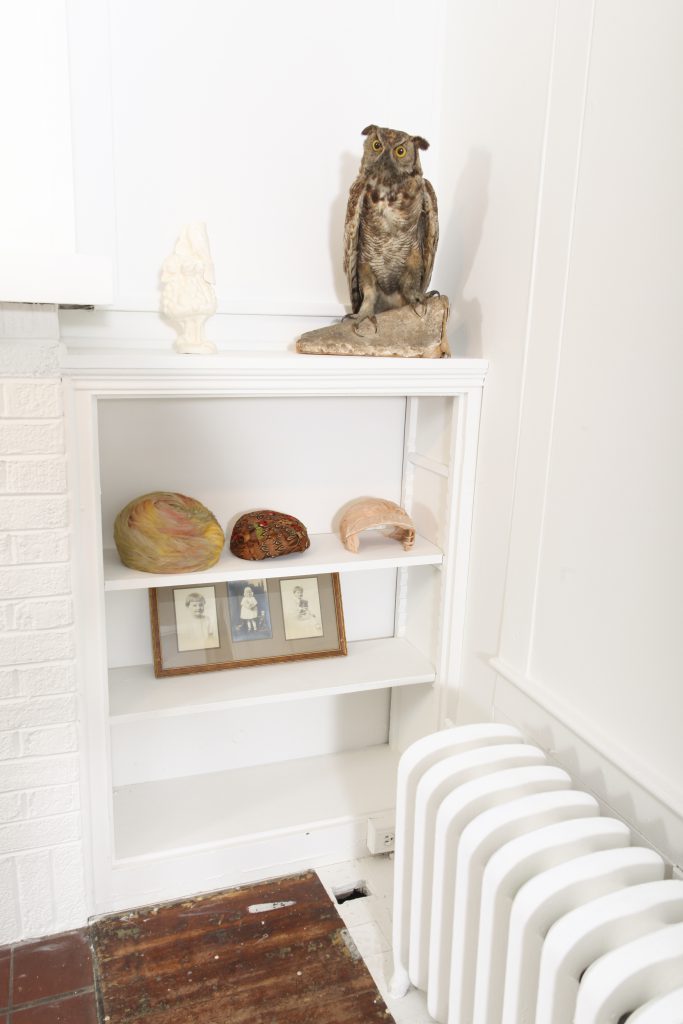
Across the room, a clump of hair clogs a sink. Above it hangs an open vanity mirror that marks the pinnacle of Bivens’ interference of object and space. The mirror features a small camera that records viewers and live-streams them on a screen hidden inside a nest that is placed within a large, antique radio on the opposite side of the room. By introducing a camera, Bivens exploits the privacy that one assumes to have when standing in front of a mirror, as the unsuspecting viewer is projected across the gallery. In its frame, the viewer begins to question his or her relationship to the object, as they become its subject. Additionally, the camera forces the viewer to reflect on the artist’s power to revert our assumptions as passive viewers, thrusting us into the role of active participants.
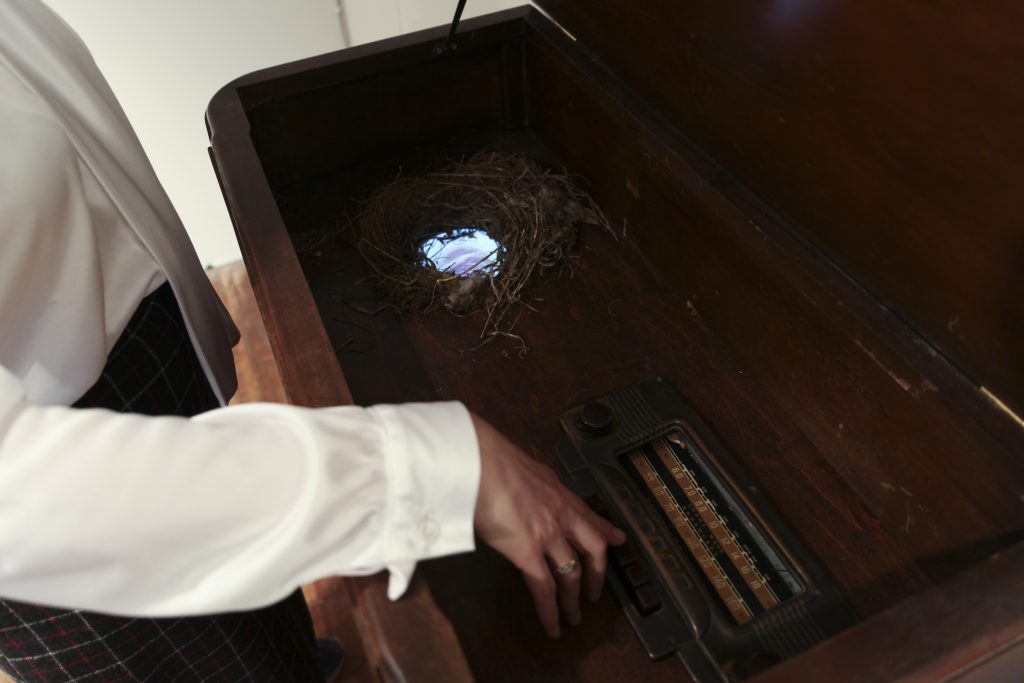
By collapsing the relationship between viewer and art object, Bivens positions us both in the present and the past. Our contemporary body and life is transposed onto preexisting narratives held by the works, echoing DEMO Project’s original identity of living quarters. Bivens successfully provokes us to consider how contemporary life is influenced by our past, our peers, and by the spaces we occupy.
Returning to the front porch and curving around the left side of the house, the viewer stumbles upon the first piece of Frances Lightbound’s exhibition Marking Place. A large wooden X, reminiscent of a railroad crossing sign, is affixed to the siding and painted its same shade of white. Towards the rear entrance of the house, the back porch is slatted, shimmering with a second, disjointed X, made of reflective, aluminum tape. Both X’s suggest that, like the house approaching its demolition, the exterior grounds will soon be off limits.
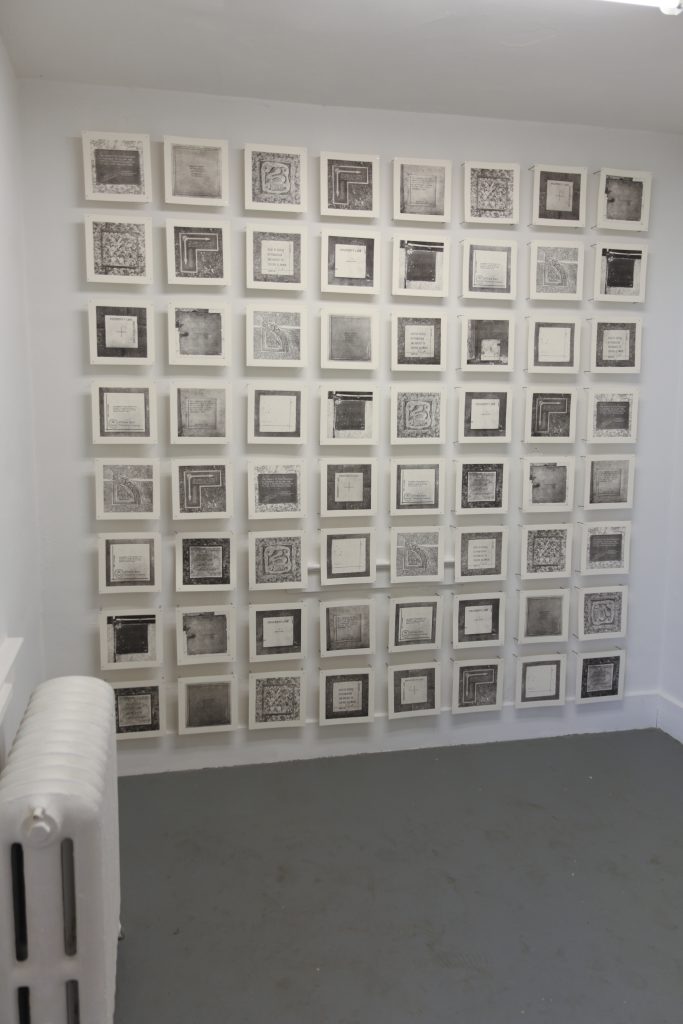
The back door leads into a second exhibition space where the viewer is met with a grid of intaglio prints. The prints are nailed two inches off the west wall, thereby erasing any remnants of a once intimate kitchen. Each print features a close-up photograph of lot lines taken in downtown Chicago, and through her spatial arrangement, Lightbound directly represents one square mile of the city. Viewing these demarcations of properties urges us to consider the authority of a simple line or cross; how do these small symbols of separation hold the power to determine boundaries and contain a human body? Lightbound thereby forces the viewer to consider his or her own body in relationship to the regulation of a seemingly public space.
The southern and eastern walls feature two beautifully-crafted artist books. The accordion book Unknown Quantity, is spread open on a small white shelf. Therein, Lightbound pairs images of diverse crosses found in cityscapes with short texts, ranging from explanatory to poetic. Through the coupling, Lightbound meditates on a variety of negations symbolized by an X. It’s impossible to separate Lightbound’s exhibition from the transitory nature of DEMO Project, a space that has flirted with demolition since its establishment. The show is intrinsically tied to the current political climate as viewers are forced to consider the relationship between bodies and borders, however invisible or concrete they may be.
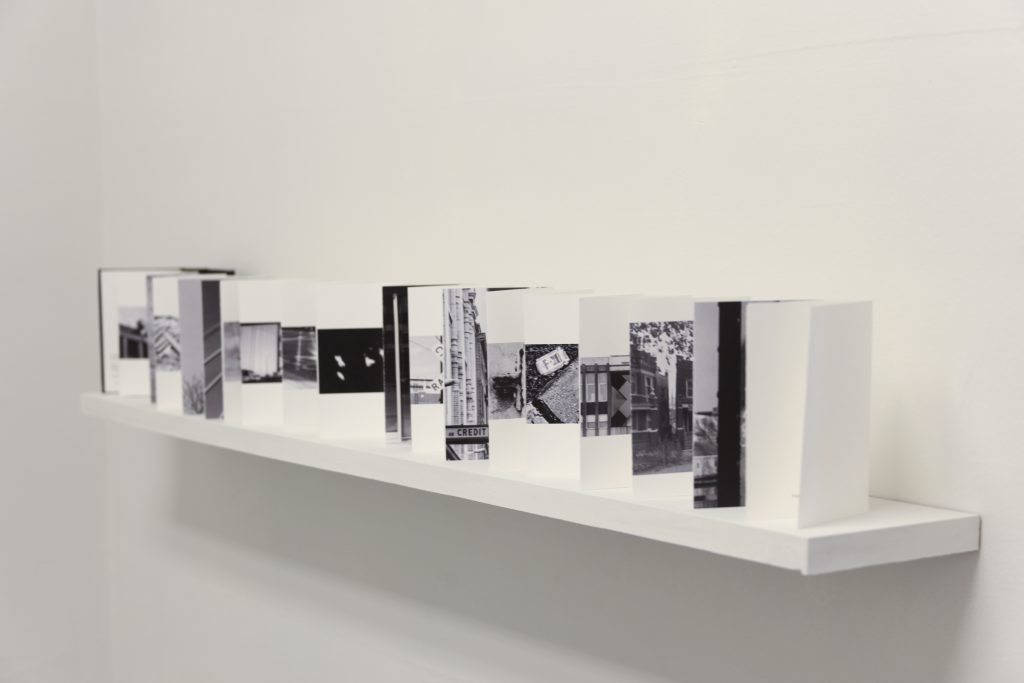
Contextual Discrepancy and Marking Place are on display through March 3, 2017. DEMO Project is located on the premises of the Springfield Art Association’s campus at 732. N. Fourth Street. Gallery hours are Saturday afternoons from 1:00PM to 4:00PM (also available by appointment).
Emily Ward Bivens is a professor of Time-Based Art at the University of Tennessee, Knoxville, and she received her MFA from the University of Boulder, Colorado. She has held solo exhibitions nationally at the Museum of Contemporary Art in Denver, CO and Temple Contemporary in Philadelphia, PA, as well as internationally at Skulpturens Hus in Stockholm, Sweden.
Frances Lightbound is a Chicago-based artist who recently graduated with an MFA in Printmedia at the School of the Art Institute of Chicago. She is currently a resident at HATCH Projects with the Chicago Artists’ Coalition and a fellow at the 2016-2017 Field Trip / Field Notes / Field Guide project.
Featured Image: Photo courtesy of DEMO Project.

Melanie Teresa Bohrer grew up in Munich, Germany. She received her MFA from the School of the Art Institute of Chicago, previously completing a BFA in Printmaking at the Rhode Island School of Design. Bohrer works as a personal assistant to Professor Jacqueline Stewart with the University of Chicago, and also as an intern at the Weinberg Newton Gallery. She is currently an Artist in Residence at the Prairie Center of the Arts in Peoria, IL. In her work, Bohrer explores ideas of national, inherited trauma, and turns to language and translation, as well as object making, to express the emotional implications of living between continents and customs.
